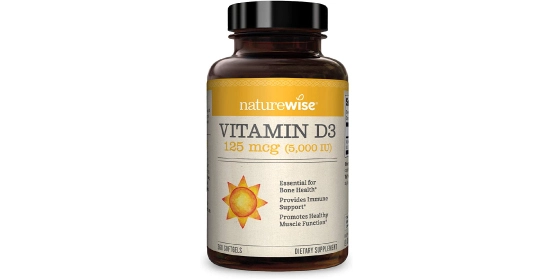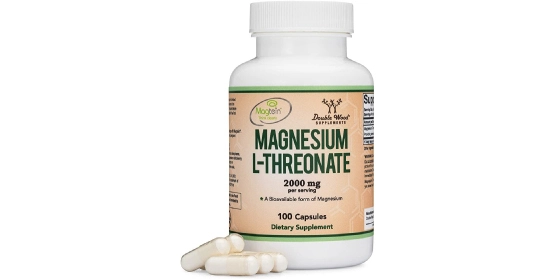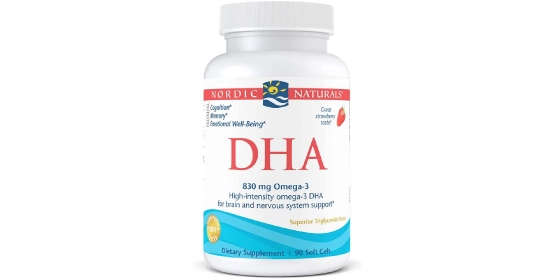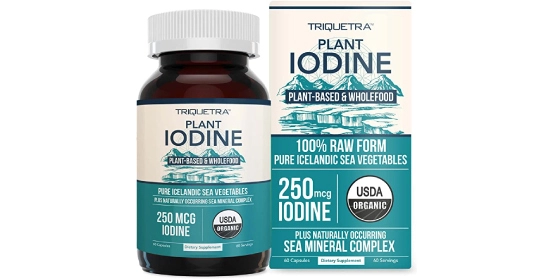7 Health Supplements That Actually Work
January 17, 2023
A quick search of “Health Supplements” yields a staggering 2,600,000,000 results in (1.04 seconds).
With so many options, it’s; no wonder most people feel overwhelmed–nearly 3 billion web pages dedicated to supplements–many of which contain conflicting, confusing, and in some cases, fabricated claims.
I’m inherently a minimalist–especially with fitness. Simple is often better and your best bet is always to eat more food with a face or come from the ground to get vitamins and minerals. Unfortunately, supplementation is becoming increasingly necessary due to our unbalanced lifestyles, declining soil, and overall food quality.
When it comes to health supplements that actually work, here are my recommendations:
1. Vitamin D.
Chances are, you could use the D– As much as 85% or about 270+ million people in the US are deficient.
You get Vitamin D from daily sunlight exposure; however, cooler climates & lathering up sunscreen often reduce Vitamin D levels and absorption.
Certain foods, like mushrooms, fatty fish, and egg yolks contain vitamin D, but not enough for most people to reach adequate levels.
How much do you need?
Levels of 50 nmol/L (20 ng/mL) or above are adequate for most people for bone and overall health. Levels below 30 nmol/L (12 ng/mL) are too low and might weaken your bones and affect your health
During the warm summer, get 15-20 minutes (minimum) of sunlight each day to boost vitamin D levels. Avoid wearing sunglasses most of the time, as the receptors in your eyes are crucial for vitamin D absorption. I also take 5000 IU’s per day.
During the colder months, sun exposure decreases, and vitamin D levels also fall. Interestingly enough, winter months tend to bring the cold and flu virus–and one potential reason for their increased spread is declining vitamin D levels during the winter months.
During the winter months, I bump vitamin D supplementation to 10,000 IU’s per day–which is two small 5,000 IU gel caps.
More info on Vitamin D here: What No One Tells You About Vitamin D
What I use: Vitamin D, 5000 IU capsule
2. Magnesium.
85% of athletes are deficient in magnesium, making magnesium the second most common vitamin and mineral deficiency in the western diet behind vitamin D.
This is a huge problem, given magnesium is a key player in over 300 chemical reactions in your body, including muscle + nerve function, energy production, and insulin metabolism.
If you lack magnesium, you can suffer from a range of side effects ranging from fatigue and high-stress levels to muscular twitches, decreased performance, recovery, and plateau in fat loss.
According to my friends over at T-Nation, Habits that might indicate a magnesium deficiency are the ingestion of lots of carbonated drinks (the phosphate binds with magnesium), too much sugar (it causes the body to excrete magnesium), or drinking a lot of coffee (caffeine causes the body to excrete more magnesium). Magnesium-deficient people might also exhibit excessive anxiety, muscle cramping, or eye twitches.
There are many types of magnesium available:
Magnesium citrate –Common in intra-workout drinks, but often causes gastrointestinal issues. May help with muscular contractions.
Magnesium oxide– The cheapest and least effective magnesium. It works best if you’re looking for a laxative.
Magnesium sulfate: Epsom salt. Great for treating inflammation and absorbs well through the skin.
Magnesium chloride–Transdermal sprays and cream-great during and post-workout for muscular performance.
Magnesium Taurate: Boosts ATP (energy production), reduces blood pressure, improves insulin sensitivity, and calms the body.
Magnesium Malate: Supports nerve, muscular, and joint function. The “malate” added to elemental magnesium may aid in absorption.
Magnesium L-Threonate: Boosts cognition, memory, and learning while having sleep and relaxation. Best for cognitive health and recovery.
Magnesium Glycinate: Quickly absorbed and gentle on your GI tract, glycine is great post-workout for reducing stress.
Personally, I take 400mg of Magnesium threonate year round and magnesium taurate (200-400 mg) for heart and brain health.
For muscular performance, I’ll use a transdermal spray on hard workout days or a transdermal lotion (ancient minerals).
Recommended levels for men are 450 mg per day and 320 mg per day for women. In my experience, this is low, especially if you’re stressed and active. If you supplement with magnesium, it can take 2-4 weeks to notice a difference–and you need to gradually increase your supplementation lest you want to clear your bowels.
3. Omega 3 Fish Oil
Omega 3 fish oils are crucial for heart, joint, cellular, and brain health.
Natural sources include dairy and wild-caught fatty fish. What’s important to understand with fatty acids is the importance of balance.
Unfortunately, the modern diet is high in inflammatory omega 6’s and 9’s commonly used in processed foods.
What’s important to understand with fatty acids is the importance of balance.
An ideal ratio for human health is 1:1 or 1:2 Omega 3’s to Omega 6’s.
Here’s the kicker: in the western diet, the average level is closer to 1:17. Yikes.
What does this mean for your health?
Take a peek at this research study on Omega 3’s:”
Excessive amounts of omega-6 polyunsaturated fatty acids (PUFA) and a very high omega-6/omega-3 ratio, as is found in today’s Western diets, promote the pathogenesis of many diseases, including cardiovascular disease, cancer, and inflammatory and autoimmune diseases, whereas increased levels of omega-3 PUFA (a low omega-6/omega-3 ratio) exert suppressive effects. In the secondary prevention of cardiovascular disease, a ratio of 4/1 was associated with a 70% decrease in total mortality. A ratio of 2.5/1 reduced rectal cell proliferation in patients with colorectal cancer, whereas a ratio of 4/1 with the same amount of omega-3 PUFA had no effect. The lower omega-6/omega-3 ratio in women with breast cancer was associated with decreased risk. A ratio of 2-3/1 suppressed inflammation in patients with rheumatoid arthritis, and a ratio of 5/1 had a beneficial effect on patients with asthma, whereas a ratio of 10/1 had adverse consequences. “
In other words, having too high of an Omega 6 ratio increases risks of cardiovascular disease, autoimmune disease, arthritis, and asthma.
Other studies have also shown a link between increasing Omega 3 supplementation and reducing depression.
To improve your omega 3 to 6 ratio, it’s crucial to avoid most vegetable oils and highly processed foods. They’re chock-full of empty calories . When consumed in excess, will cause some of the issues listed above.
When it comes to supplementation, most soft gels come in 1g soft gels.
Look for a product that contains at least 60% DHA & EPA.
To calculate this, there are two ingredients: DHA & EPA. They should be listed like…400 mg and 200mg. This is 600mg, or at least 60% Omega 3.
Low-quality fish oils are full of fillers and won’t work to offset the ratio of omega 3’s to 6’s–rendering them useless.
Brands I use Legion–save 10% with Code BACH.
Flameout by T-Nation
Nordic Natural
4. Iodine:
Iodine is a crucial mineral that aids your thyroid in converting T3 to T4–improving metabolic and cardiovascular function. If you’re interested in improving your metabolism for better fat loss and health, you should consider iodine.
I recommend iodine to many of my female clients, specifically those who have done lots of dieting in the past.
Iodine is sometimes added to salt, but not always. The label generally tells you, so take a second to read salt before you buy.
Other sources include seafood and seaweed; however, most people don’t eat enough of either one of them–and seaweed chips basically seem like spending $5 to stay hungry while eating air.
If you supplement, I recommend 150-200 MCG is recommended daily.
Triquetra Iodine
5. Vitamin B (complex)
B vitamins involve everything from converting nutrients into usable energy and neurotransmitters like serotonin to proper mitochondrial function. The human body needs vitamin B12 to make red blood cells, nerves, and DNA.
Low vitamin B levels symptoms include
1. Weakness, tiredness, or lightheadedness.
2. Heart palpitations and shortness of breath.
3. Pale skin.
4. A smooth tongue.
5. Constipation, diarrhea, loss of appetite, or gas.
6. Nerve problems like numbness or tingling, muscle weakness, and problems walking.
7. Vision loss.
There can be many reasons for vitamin B deficiency. Some people have issues absorbing vitamin D. Others, namely vegetarians and those who go through weight loss surgery, are more likely to struggle with low vitamin B levels.
Meats, eggs, poultry, and dairy have the highest vitamin B12, while some grains are fortified with it.
I eat red meat and eggs multiple times weekly while occasionally supplementing with desiccated liver tabs. Otherwise, the ONNIT B-Complex vitamins are a quality product.
Related: https://bachperformance.com/7-muscle-building-supplements-that-actually-work/
6. Calcium:
50% of people worldwide are deficient in calcium, according to the New York Annals of Science.
Calcium is known for its essential functions for bone health and formation. Calcium intake is especially crucial for kids, athletes, and women with a family history of osteoporosis. When we consume enough calcium, it’s stored in bones.
When we don’t, it’s withdrawn from your bones, increasing their likelihood of breaking.
Most people wait too long to improve bone health and suffer from osteopenia and osteoporosis–two destructive health conditions that affect women at twice the rate of men.
Women account for 71% of the 1.5 million osteoporotic fractures every year. Osteoporotic fractures often lead to other medical complications like pneumonia or blood clots and decreased quality of life, and often the patient will go directly from the hospital to a nursing home. Shockingly, JAMA reported in 2001 that the 6-month mortality rate for a hip fracture was 13.5%.
Hannan EL, Magaziner J, Wang JJ, et al. “Mortality and locomotion 6 months after hospitalization for hip fracture: risk factors and risk-adjusted hospital outcomes”. JAMA 2001. 285 (21): 2736–42.
Other studies have both Mundi et. all have found one-year mortality after hip fracture is 21% once the fracture is surgically addressed. If a hip fracture is not addressed with surgery, the one-year mortality is about 70%.
Mundi S, Pindiprolu B, Simunovic N, Bhandari M. Similar mortality rates in hip fracture patients over the past 31 years: A systematic review of RCTs. Acta Orthopaedica. 2014;85(1):54-59.
Recommendations are typically 1,000 mg of calcium with numbers increasing to 1,200 mg per day for women over 50 and men over 71. Other information I’ve seen has increased the amounts to 1200-1500 mg/daily, but not to exceed 2000mg.
Beyond bone health, calcium is also a key player in muscular contractions, nerve, and heart health–all crucial for health, performance, and physique.
I recommend Thorne Cal Mag Citrate +Vitamin C Powder
7. L-Tyrosine:
L-tyrosine is one of my favorite supplements, especially when working with someone who is short on sleep, motivation, and stressed out. I call it “Motivation in a pill.”
L-tyrosine helps create epinephrine (adrenaline) , norepinephrine (aids in fight or flight response), and dopamine (the feel-good chemical) while also aiding in impulse control and reducing cravings.
While l-tyrosine shouldn’t be used as a sleep replacement, it has been shown to offset declines in cognitive performance with sleep deprivation.
Most people walk around underslept, overstressed, and overwhelmed, so L-tyrosine is a helpful supplement.
If you’re well rested, L-tyrosine may still have clear cognitive benefits as studies have found it to improve cognitive function and deep thinking.
The meat and nuts breakfast is popular (and self-explanatory) for improving dopamine levels.
Foods that are high in dopamine include eggs, fish, poultry, wild game, cheese, beef, pork, and leafy greens like mustard greens and spinach.
Otherwise, supplementation of 1-2g of L-tyrosine about an hour before workouts can boost workout performance.
Personally, I’ll cycle off caffeine a few times a year. When I do, eliminate caffeine and take 3g of L-tyrosine for 2 days broken into two doses, then another 1g of L-tyrosine in two doses the following two days. This helps offset the energy drop and withdrawal so I can still perform my best without my usual IV of dark roast coffee.
These are the 500MG tablets I take: L Tyrosine
So, what health supplements actually work, and who are they best for?
Vitamin D: Everyone.
Magnesium: Everyone.
Omega 3’s: Everyone, unless pescetarian.
Iodine: Those who don’t eat seafood may have issues with their thyroid from long-term dieting.
Vitamin B: Many with limited meat consumption and low energy levels.
Calcium: Many female clients and older adults.
L-tyrosine: Those who are overstressed, struggling with motivation, and trying to reduce caffeine consumption.
Looking for more guidance on supplements?
Here are our top 7 Muscle Building Supplements.
https://bachperformance.com/7-muscle-building-supplements-that-actually-work/
References:
U.S. Department of Health and Human Services. (n.d.). Office of dietary supplements – vitamin D. NIH Office of Dietary Supplements.
Zhu, Z., Zhu, X., Gu, L., Zhan, Y., Chen, L., & Li, X. (2021, December 9). Association between vitamin D and influenza: META-analysis and systematic review of Randomized Controlled Trials. Frontiers.
https://www.frontiersin.org/articles/10.3389/fnut.2021.799709/full
Luoma, T. C., & TC Luoma, T. N. (2022, May 19). Tip: Get more magnesium. T NATION. Retrieved December 31, 2022, from
https://www.t-nation.com/supplements/tip-get-more-magnesium/
AP;, S. (n.d.). The importance of the ratio of omega-6/omega-3 essential fatty acids. Biomedicine & pharmacotherapy = Biomedecine & pharmacotherapie.
https://pubmed.ncbi.nlm.nih.gov/12442909/
Liao Y;Xie B;Zhang H;He Q;Guo L;Subramanieapillai M;Fan B;Lu C;McIntyre RS; (n.d.). Efficacy of omega-3 pufas in depression: A meta-analysis. Translational psychiatry.
https://pubmed.ncbi.nlm.nih.gov/31383846/%E2%80%93
Neri DF;Wiegmann D;Stanny RR;Shappell SA;McCardie A;McKay DL; (n.d.). The effects of tyrosine on cognitive performance during Extended wakefulness. Aviation, space, and environmental medicine.
https://pubmed.ncbi.nlm.nih.gov/7794222/
LS;, J. B. J. H. B. K. S. C. (n.d.). Effect of tyrosine supplementation on clinical and healthy populations under stress or cognitive demands–a review. Journal of psychiatric research.
https://pubmed.ncbi.nlm.nih.gov/26424423/?i=5&from=%2F25598314%2Frelated
B;, C. L. S. H. A. M. H. (n.d.). Food for creativity: Tyrosine promotes deep thinking. Psychological research.
https://pubmed.ncbi.nlm.nih.gov/25257259/
Staff, H. H. P. (2022, March 23). Vitamin B12 deficiency can be sneaky and harmful. Harvard Health.
https://www.health.harvard.edu/blog/vitamin-b12-deficiency-can-be-sneaky-harmful-201301105780














